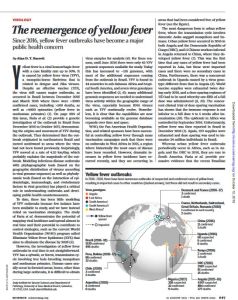
The Reemergence of Yellow Fever
Since 2016, yellow fever outbreaks have become a major public health concern
Recommendation
Asia experienced its first cases of yellow fever in 2016, when 11 workers carried the virus home with them from Angola. Those cases were contained, but this wasn’t the first time yellow fever has piggybacked on unsuspecting travelers, and it won’t be the last. Alan D. T. Barrett, Director of the WHO’s Collaborating Center for Vaccine Research, provides a brief look at the recent outbreaks and the advanced modeling techniques that might quell future epidemics. This Science magazine article will prove useful to health care workers and policymakers, and even people unfamiliar with virology.
Summary
About the Author
Alan D. T. Barrett is a professor of microbiology and immunology at the University of Texas Medical Branch at Galveston. He is the director of the Sealy Institute for Vaccine Sciences.
















Comment on this summary